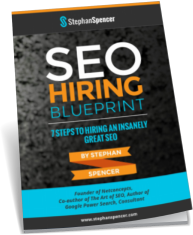One of the most inspiring sessions at Web 2.0 Expo last week was “Mastering the Low-Information Diet” by entrepreneur Tim Ferriss. Tim is author of the book The 4-Hour Work Week. (Yes, it’s true, he spends only 4 hours per week running his 2 businesses.) The session was part of the “Ignite” evening of lightning-round 5-minute sessions. Tim’s presentation was voted by the audience (using cell phone voting via SMS) as one of the best sessions of the night and was thus included in the keynote on Day 3 of the conference. So I got to enjoy Tim’s 5-minute “drinking from a firehose” talk — twice! It’s amazing what a speaking pro can do with a mere 5 minutes! Here are my notes from the session:
Tip #1: “Selective ignorance”
We’re in a world of infinite interruption and infinite minutia. Practice “selective ignorance” — you don’t need to know and follow everything.Tip #2: “Batching”
Batching is performing similar tasks at set times. You only do these tasks at specific times and in the meantime you let them accumulate.
For example, check your email only twice a day. Use an auto-responder to let urgent issues get picked up sooner. Example of auto-response message: “Dear esteemed colleagues, In order to get more done, I’m checking email only twice per day — once in the late morning and once in the late afternoon. If you require a response sooner than that, please call my cell phone at 555-555-5555.”Tip #3: Pareto Principle
Focus on the “critical few,” not the “trivial many.”
You may ask “What if i miss something important?” Tim responds that he’s never missed anything that cost him more than $500.00. Whereas, by practicing this, he has gained millions of dollars in additional booked revenue.
“Pareto Principle” is the 80/20 rule. For example, 20% of the people in your business life will consume 80% of your time. Not all customers are created equal. 5% of your customers may contribute 95% of your profit. Figure out which customers are not profitable and “fire” them. Tim fired the worst offenders and put remaining lower-profitability customers “on auto-pilot” — never proactively contacting them or thinking about them.Tip #4: Outsource your life
Tim has between 20 and 40 MBAs around the world that he outsources various aspects of his business and personal life to, such as: database creation / prospect list creation, etc… Even online dating!
Find people to outsource your life to on GetFriday.com (7 day trial), Elance.com, etc.
If you can pay someone half or less of what you earn per hour and they can do a reasonable job of it, outsource it!Tip #5: Schedule life in advance
It’s not about “work-life balance,” it’s about “work-life SEPARATION”.
If you have a void, you’ll fill it with work. So fill your schedule with personal activities too, not just business activities.

 SIGN UP FOR EXCLUSIVE WEEKLY CONTENT
SIGN UP FOR EXCLUSIVE WEEKLY CONTENT 


Great points! I agree 1,2, 3, and 5. I don’t question the math of #4. I simply worry that we keep raising the bar with our expectations such that we spend time outsourcing so much time that we forget to do the heavy lifting of figuring out who we are and where we’re going.
With regard to #5, Alice Roosevelt Longworth said:
“I have a simple philosophy: Fill what’s empty. Empty what’s full. Scratch where it itches.”
Hi Stephan – Tim Ferris is the man. I just devoured his book and have made some big changes to the way I handle information (particularly email and phone calls). I just wanted to let you know that the link in your post links to the wrong Tim Ferris.
Bests,
Will
Email is the biggest time waster. You just reminded me to turn off my GMail alerts; I thought it would be helpful but it is the my chief distraction. Let’s hear if for productivity!